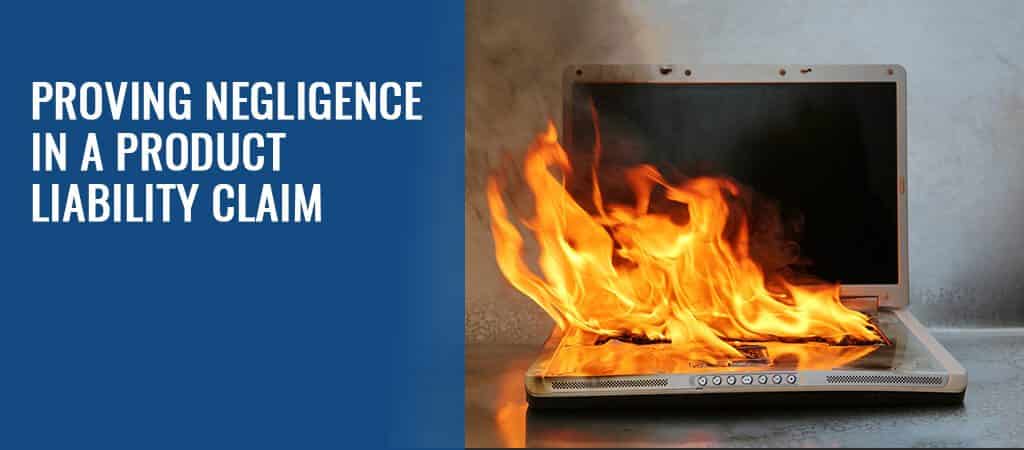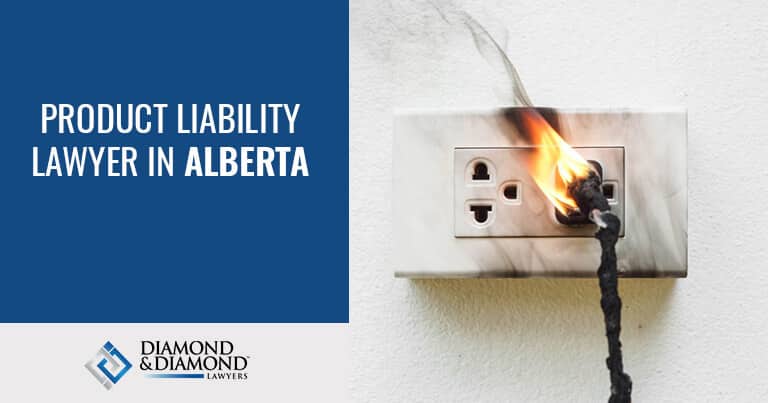Have you been injured because a product you have used is faulty? If you have, you are in the right place. We can help. But first let us explain a bit more about what product liability claims are, so you can work out if you have a potential case.
First, let’s take a look at the types of businesses that can potentially be held liable for injuries caused by a defective product. This gives you an idea of who you may have to sue to receive compensation for your injury. The list includes:
- Product manufacturers
- Wholesalers
- Suppliers
- Retailers
- Marketing companies
If any of these types of businesses are found to be responsible for your injury, you can potentially recover damages by filing a personal injury claim.
Product Liability Law in Alberta
In Alberta, product liability cases are pursued using the common law principles which are followed by all Canadian provinces. Except that is for Quebec, where civil law is used.
Under Canadian common law, all product liability claims are assessed against a negligence standard, rather than a strict liability standard.
Proving Negligence in a Product Liability Claim

When you file a product liability claim, you must establish that:
- The party being sued owes a duty of care to the injured party
- The party that is being sued failed to perform their duty
- The injured party can prove that they have suffered damages
- The injuries suffered were actually as a result of the defendant’s breach of duty of care to the injured party
Statute of Limitations for Product Liability Claims in Alberta
If you do need to make a claim, you must do so within the statute of limitations. As you will see, there is little, often no, leeway on this.
You have 2 to 6 years from the day on which you were injured to file your action. That means that you need to be speaking to a lawyer, like us, well before those deadlines. We will need time to review your case, gather evidence, assess it, and work out what the best approach will be.
It is always best to work on the principle that the deadline that applies to your case is 2 years, not the 6 years. But don’t be afraid to get and touch about a product-related injury you suffered a few years ago. We will be able to quickly tell you which statute of limitations deadline applies to your case.
Occasionally, the limitation period can be extended because the product liability claim was not reasonably apparent at the time of your injury. So, always ask a lawyer rather than assume too much time has elapsed since you hurt yourself.
Common Types of Product Defects
Several kinds of product defects can lead to an injury for which you can potentially claim for compensation. They include the following:
- Manufacturing defects – Sometimes errors in the manufacturing process lead to products being produced that are not faithful to the original design. In that situation, an error that makes that product unsafe would almost certainly be the responsibility of the manufacturer.
- Design defects – If the design itself is not safe, the liability will usually then lie with the company who has overall responsibility for the product.
- Marketing defects – Should the product have been marketed to you improperly, the marketing firm may be held liable. For example, if you were to buy an electrical item that was advertised using images of it being used outdoors, when in fact it was not safe to do so.
- Lack of safety warnings – Even perfectly safe products can become unsafe if they are used in the wrong way. That is why the law requires that products be sold with appropriate safety warnings. As well as proper instructions that show you how to use the product safely.
Products That Can Become Defective
Potentially any product can turn out to be defective. But some classes of products are more prone to this than others. Over the years, we have mainly dealt with cases that involve the following:
Pharmaceutical products
Surprisingly, a lot of defective pharmaceutical products reach the market including:
- Over the counter medications
- Prescription drugs
- Orthotics
- Pain relief devices
- First aid kits
- Braces and other supportive or limb correction devices
Vehicle defects
Alarmingly it is not uncommon for vehicles to be launched that have serious design flaws. Some of which have been the underlying cause of many car accidents. Recent examples include:
- Brakes that suddenly fail
- Tires that blowout
- Engines that cut out even at high speed
- Components that spontaneously combust
- Safety items that do not work, including child restraints
- Airbags that go off for no reason
- Airbags that fail to go off during accidents
- Faulty seatbelts
- Head restraints that cannot be safely adjusted or that fail
Food products
Sadly, the number of faulty food products that are leading to serious health issues and injuries is on the increase. Examples include:
- Food items that contain foreign objects
- Food products that contain out of date or condemned ingredients
- Foods that do not include proper allergen warnings
- Food products that contain allergens that the label says they are free of
- Products that have not been hygienically produced which cause food poisoning and other illnesses
Here are some other more general examples of products that are sometimes faulty and dangerous:
- Home construction products or materials
- Industrial equipment and materials
- Construction materials and equipment, for example, forklifts, construction lifts and bucket cherry pickers
Protect yourself and your family from the consequences of defective products. Call Diamond & Diamond now to consult with an Alberta product liability lawyer.
Talk to an Alberta Product Liability Lawyer from Diamond & Diamond
Diamond & Diamond lawyers have extensive experience in pursuing personal injury claims. Including those that involve product liability. To get help from us you can:
Visit any of our offices in Alberta and the surrounding area
Call our 1-800 number – any time, any day
Use our online contact form
Regardless of how you choose to get in touch, we will always offer you a free initial consultation.
PRO TIP :
“Product liability cases often get expensive, so it might be wise to get a law firm to handle your case instead of a solo practitioner.”
FAQs on Product Liability Lawyer in Alberta
What is crashworthiness, and how does it relate to product liability claims?
Crashworthiness is the degree to which the design and the materials used to build a vehicle will protect the occupants during an accident. Failure to meet the legal safety standards and properly crash test a vehicle is a serious offence. Potentially, the designer, testing facility and manufacturer could all be sued as part of a product liability claim.
I want to file a product liability claim, but I already discarded the product (because I didn’t know any better), so what should I do?
Even if you have put a faulty product that caused you injury in the bin you should still speak to a lawyer to see if you can still pursue a claim. In some cases, you will still be able to do so. Your lawyer will know how to uncover other compelling evidence, provided it exists. But it is always best to have the faulty product and the packaging available for them and the court to examine. So, keep it if you can.
I got injured by a product I don’t personally own -- can I still sue?
Even if you do not personally own a product that caused you to be injured, you can still potentially sue. An experienced product liability lawyer will be able to confirm whether you have a case or not.
How can a personal injury lawyer help in product liability claims?
Personal injury lawyers are no strangers to handling cases that involve people getting hurt because of a defective product. They can gather the evidence needed to file a product liability claim and then provide legal advice to those who suffered an injury after using a product.
What are the grounds for filing a product liability lawsuit in Alberta?
First of all, the cause of the injury must be a product as defined by law in Alberta. Secondly, the injured party must prove that the product was indeed defective. On top of that, the injured party must provide evidence that the defect existed at the time the product left the possession of the manufacturer, supplier, or retailer. Lastly, the injured party must show proof that the injury was directly caused by the defect in the product.
What do I need to prove to win a product liability claim?
The first thing you need to prove is that the product is defective. Furthermore, you have to present evidence that the product has failed in its normal use and that you did not misuse the product. Lastly, you need to successfully demonstrate that your injury was caused by the product’s defect.
Who should I sue if a defective product injures me?
If a defective product injures you, you should sue all the people involved in its distribution chain. These people include the manufacturer, retailer, supplier, wholesaler, or distributor of the product.
How do I establish liability for a defective product?
You can establish liability for a defective product by proving that it is unsafe or dangerous. You should also prove that manufacturers have intentions to distribute the product to the consumers despite its hazards, and because of this, it has caused some injuries to its users.
How soon do I need to file a product liability claim?
You should file a product liability claim if the company refuses to negotiate in a fair and just manner. If possible, you should settle your claim outside of court to save resources like time and money.
How long do I have to file a defective product liability claim?
The time limits for product liability claims vary per area. No province has a statute of limitations for defective product claims of less than one year. Many have a two-year time limit, some have a three-year time limit, and a few have time limits of four or more years.
What kinds of compensation can I ask for in my defective product liability claim?
Compensatory damages are the type most frequently awarded in defective product cases. They are intended to compensate people for their injuries and to help them recover. You can seek compensation for medical expenses, lost wages, and property repair or replacement.
Can I sue if a pharmaceutical drug I took caused negative side effects?
No, you can’t sue if a pharmaceutical drug you took caused negative side effects unless unless your attorney can show evidence establishing three things: You sustained an injury, the drug was defective due to improper design, manufacturing or a failure to warn, and your injury was a side effect of the defective medication.



